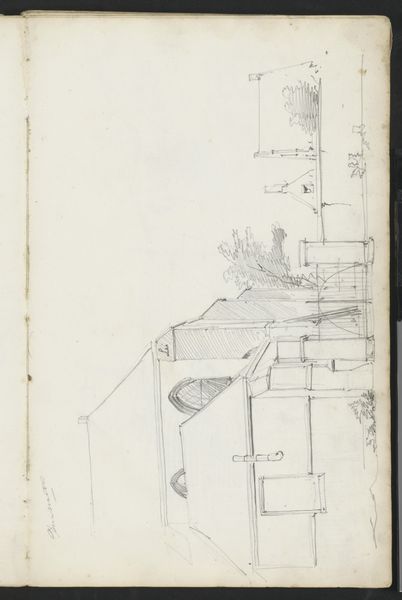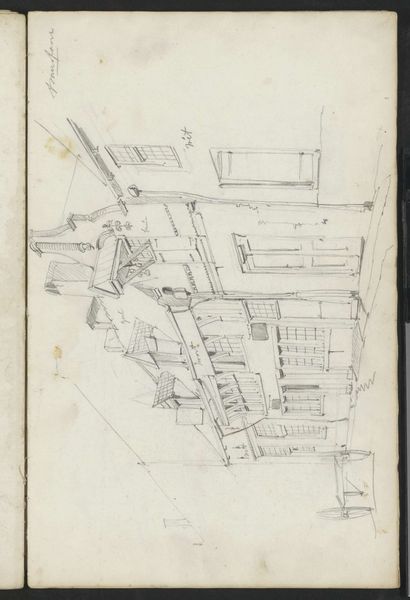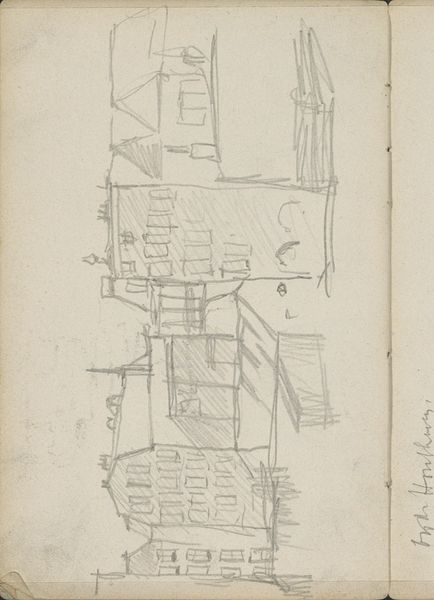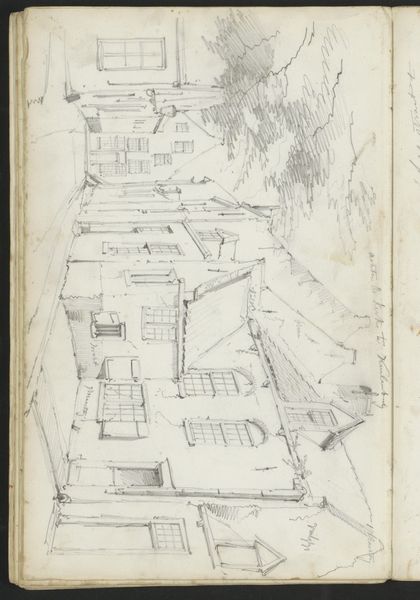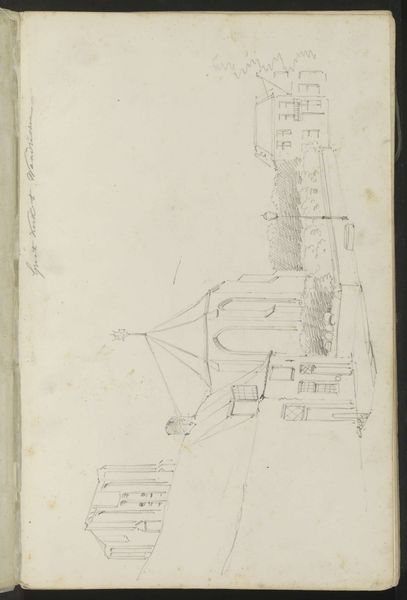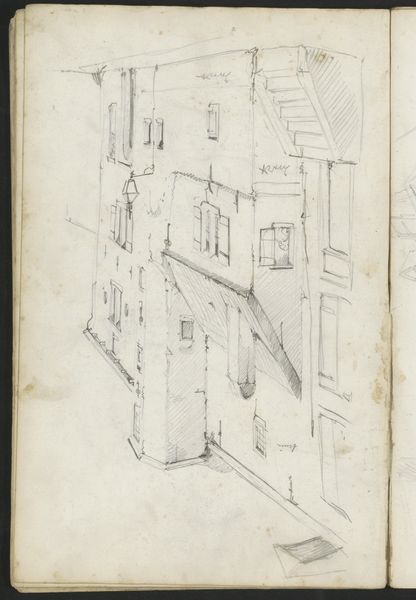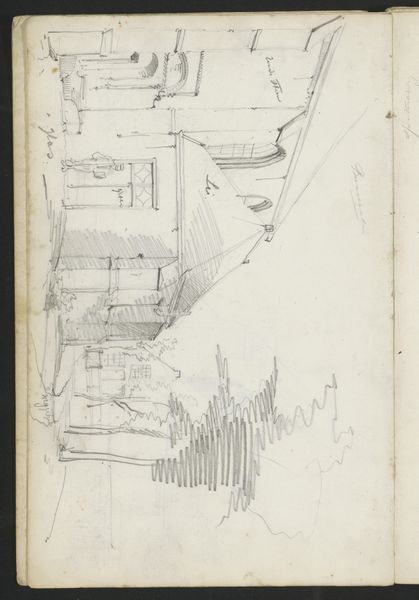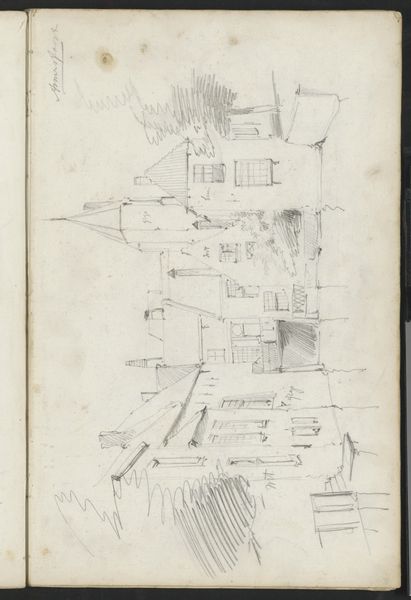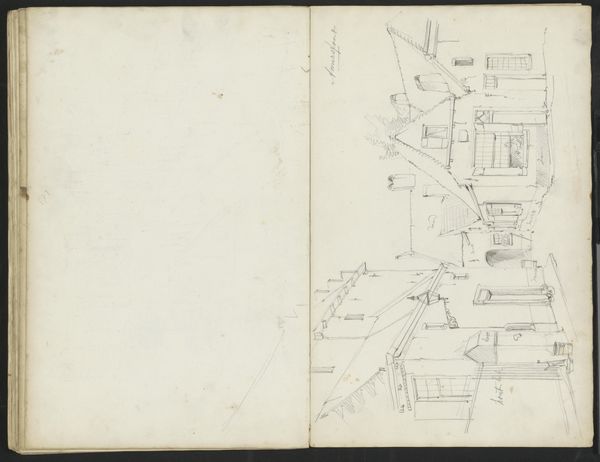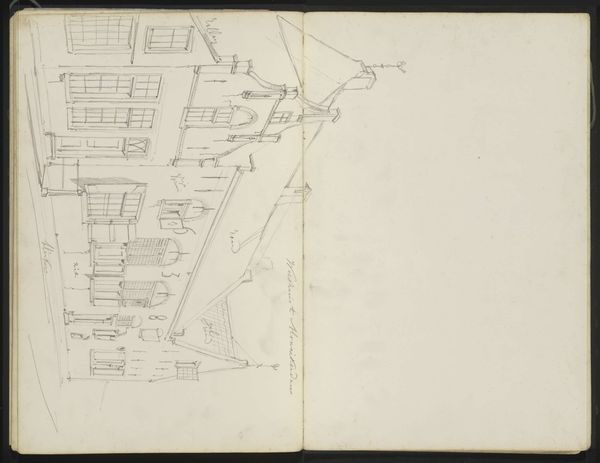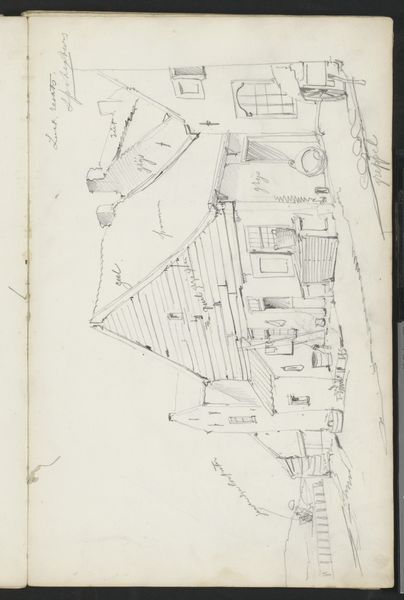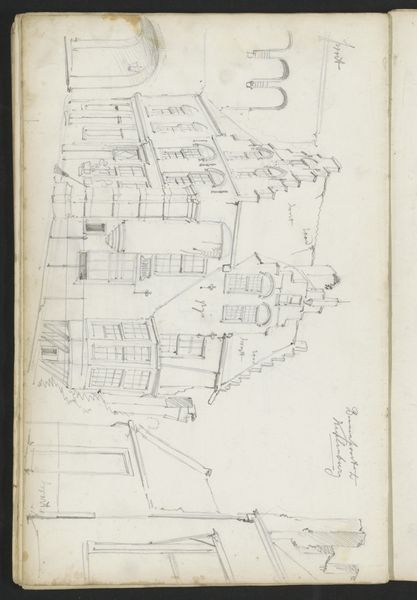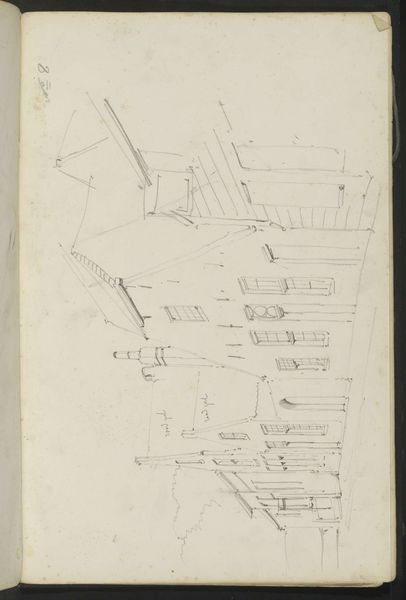
Gezicht op een straathoek met een sokkel met een beeldhouwwerk 1849 - 1895
0:00
0:00
willemkoekkoek
Rijksmuseum
drawing, sculpture, pencil
#
drawing
#
dutch-golden-age
#
sculpture
#
pencil
#
cityscape
#
street
#
realism
Copyright: Rijks Museum: Open Domain
Curator: "Gezicht op een straathoek met een sokkel met een beeldhouwwerk," or "View of a Street Corner with a Pedestal with Sculpture," is a work made between 1849 and 1895 by Willem Koekkoek. Editor: My initial impression is a quiet sort of street corner; it feels a bit like looking at an architect's preliminary sketch, stripped down to its essential lines. Curator: Absolutely. The pencil drawing invites us to consider how 19th-century urban space was being represented, and specifically, what the role of public sculpture was in constructing civic identity. Who gets commemorated and why is, of course, key. Editor: For me, the interest lies more in Koekkoek's use of line to depict architectural details, how the precise lines convey the building's structure and its material qualities. You can see the craft in it, the attention to detail despite it being a relatively quick sketch. What material could it be depicting? The sculpture? The Stone buildings behind? What was available locally? How did the stone influence construction methods and therefore the lived experience? Curator: But consider what is missing: any kind of identifiable person. Is this idealized view deliberately devoid of the messiness of daily life, reinforcing perhaps a specific vision of order and power through architecture and monumental sculpture? Editor: It's sparse, sure, but that sparseness itself speaks to the availability, and cost, of materials at the time of the sketch. And the sculptural form becomes material evidence too, evidence of the means, tools and labour used in its creation. Curator: It’s fascinating how this piece straddles both realism and idealization; how do we reconcile the intent to portray the observable world and these symbolic objects. It's like, he asks you, “How much does the stone, the marble, the materials cost?” before saying, “Imagine a city devoid of any struggle!" Editor: Right. And by concentrating on these overlooked facets, we uncover an additional stratum of the painting that explores the material factors underpinning culture itself. The choice of stone for the sculpture, the method of its creation - it's all interlinked, creating a historical web that is more nuanced and complex than just iconography. Curator: In this interplay between the seen and unseen, Koekkoek challenges us to investigate how art shapes collective understanding, reminding us that even in seeming objectivity, perspectives, class, and biases linger. Editor: Precisely. By thinking about the labor and materials of Koekkoek's drawing, we can grasp some of the very tangible concerns and conditions that form part of the image's cultural resonance, its place in art history.
Comments
No comments
Be the first to comment and join the conversation on the ultimate creative platform.

